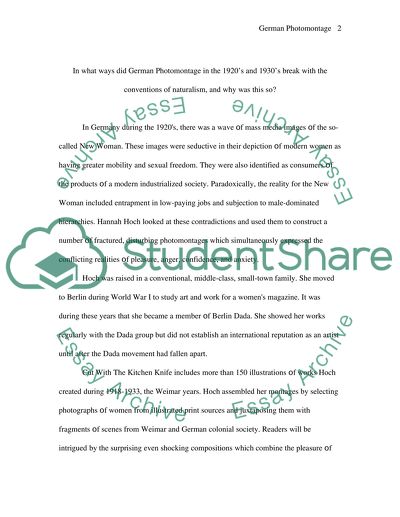Cite this document
(“German Photomontage in 1920s and 1930s Essay Example | Topics and Well Written Essays - 2500 words”, n.d.)
German Photomontage in 1920s and 1930s Essay Example | Topics and Well Written Essays - 2500 words. Retrieved from https://studentshare.org/architecture/1500679-german-photomontage-in-1920s-and-1930s
German Photomontage in 1920s and 1930s Essay Example | Topics and Well Written Essays - 2500 words. Retrieved from https://studentshare.org/architecture/1500679-german-photomontage-in-1920s-and-1930s
(German Photomontage in 1920s and 1930s Essay Example | Topics and Well Written Essays - 2500 Words)
German Photomontage in 1920s and 1930s Essay Example | Topics and Well Written Essays - 2500 Words. https://studentshare.org/architecture/1500679-german-photomontage-in-1920s-and-1930s.
German Photomontage in 1920s and 1930s Essay Example | Topics and Well Written Essays - 2500 Words. https://studentshare.org/architecture/1500679-german-photomontage-in-1920s-and-1930s.
“German Photomontage in 1920s and 1930s Essay Example | Topics and Well Written Essays - 2500 Words”, n.d. https://studentshare.org/architecture/1500679-german-photomontage-in-1920s-and-1930s.


